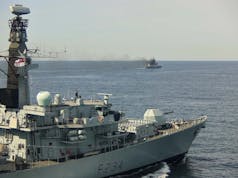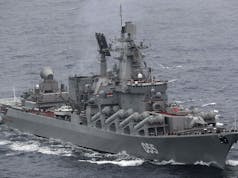American hospital ship USNS Comfort has arrived in Port-au-Prince, Haiti, for its its latest medical mission stop.
While in Port-au-Prince, US service members and medical professionals will work alongside partner and host nation staff to provide medical assistance in communities with urgent health care needs and demonstrate the commitment to strengthen regional medical capacity.
“We are pleased to welcome the USNS Comfort for its sixth visit to Haiti in the past decade,” said Michele Sison, U.S. ambassador to Haiti.
“This visit underscores continued U.S. support for humanitarian assistance in Haiti, as well as our commitment to supporting disaster preparedness and resiliency in the region.”
Comfort’s team consists of more than 900 personnel, including medical specialists from the US military, non-governmental organisations volunteers, and personnel from partner nations, including the UK.
“I am humbled and proud to be a part of Comfort’s team,” said Lt. Cmdr. Gustavo Lores, a supervisor at the shore-based medical site.
The US Navy said in a release:
“We are committed to providing quality healthcare in order to increase partner capacity and regional collaboration for humanitarian assistance and disaster relief, which is a high priority for the region.”
This marks the sixth Comfort visit to Haiti and the seventh to the region since 2007. The embarked medical teams will provide care aboard Comfort and at one shore-based medical site.













uk should build hospital/rescue ships from foreign aid budget.
It’s a vital service for many millions hospital ships. I forget how lucky I am living in the UK with the NHS at times.
Yeh, and when you look at that asset (an ex super tanker by the looks) you can see what taking soft power seriously is all about. Not to mention seriouly generous. Impressive. Well done USA.
I hope it wasn’t an ex super tanker but rather a tanker that was built into a hospital ship. Hopefully some of this foreign aid money can be steered into a hospital ship or something to ensure it benefits british jobs as well as out of the pockets of corrupt governments.
Both of the Mercy class were built as super tankers and later converted from the keel up into hospital ships.
How about 2 or 3 ships of the hms ocean design, built in the UK, optimised as helicopter landing platform’s,funded from foreign aid money crewed by RFA and used as training ships for apprentice seamen naval and merchant marine. Stocked with goods made in the UK that are basics needed for disaster relief. Strategically placed to assist Commonwealth countries in their hour of need .In an emergency could easily be converted and used in time of war.
Landing Ship Docks would be my choice, with helo support. For disaster relief, tractors, diggers, container units, portacabin medical units, water reclamation pumps etc it’s easier to get these all loaded onto landing craft rather than fly one at a time under chinook. Something the size of the San Antonio class would be ideal. We could easily buy four out of one years foreign aid budget, but spreading them out to keep ship builders with work over four years best. These can be screwed by RFA, staffed by civilian charity workers and volunteers, and two on duty two on reserve at any one time. As well as attending disaster relief, these could also fo routine medical aid to poorer countries, and also used as backup mobile hospitals for disaster and floods in the UK.
I would suggest 4 LPD, with hangar facilities, crewed by RFA (RN as needed, war) paid for by foreign aid budget, good for soft power, useful for RN, effective replacements for ocean, albion and bulwark.
Aaron I hear what you are saying however seems to me natural disasters have a habit of wiping out road Infrastructure , maybe build 2 of each and work them together, heavy lift helicopter reaching out initially then landing craft delivering aid to repair roads etc to get aid moving
Instead of the Bays could we do more with the Point Class design? It’s been suggested in a number of places as the basis for a LSS which in theory the UK is funding two of. The modifications involve at least the plating over of the deck forward of the bridge for a 2-spot flight deck and the area beneath the bridge for a hangar. Potentially also extending the superstructure backwards for more hangar/crew/hospital/etc space. A lot of vehicle-lane space would still be left intact below. Points are also, according to Wikipedia, bigger, faster and longer-legged than Bays.
The RoRo on which Point is based is very common and widely built design I believe and with the UK already running 4 (admittedly under PFI) there are logistics and maintenance skills in place so adding 2 for LSS plus maybe 1 or 2 more for aid-focused work funded by the foreign aid budget would seem to make logistical sense in terms of fleet consolidation and would give a decent sized fleet for considerable flexibility. If it ever went that way the consolidation part of me (streamlining for simplicity and economies of scale) would even be tempted to replace the Bay class by adding some more additional hulls to a “Point Plus” class fleet since the RAN might well be interested in the Bays and a “Point Plus” would have significantly better aviation capabilities.